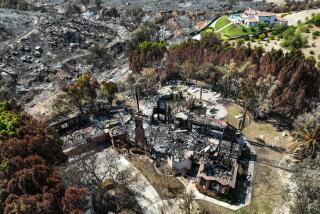GAO Estimates Final Cost of S&L; Bailout at $480.9 Billion
The final price tag for the cleanup of hundreds of failed savings and loan associations will be $480.9 billion, a figure significantly higher than previous estimates, the General Accounting Office reported Friday.
Most previous estimates were in the range of $100 billion to $150 billion for the total direct outlays by the Resolution Trust Corp. and its predecessor agency. The report by the GAO, the investigative arm of Congress, argues that an estimate of the true cost must include $320 billion in interest due on the funds borrowed to help dispose of the 747 thrifts that eventually closed their doors.
The GAO, in closing a painful chapter in U.S. political and fiscal history, disclosed its final cost estimate in its audit of the 1994 and 1995 financial statements of the RTC, the agency handling the cleanup. The RTC was closed at the end of last year.
A great many S&Ls; became insolvent during the 1980s, victims of collapsing real estate prices, speculation, bad investments and, in some cases, outright thievery. The government, which guaranteed deposits of up to $100,000 at S&Ls;, poured billions of taxpayer dollars into safeguarding 25 million individual accounts at the crippled institutions.
The government, through the RTC, recouped some of its outlays by selling S&Ls; to healthy financial institutions and by shutting them and disposing of the assets.
When the RTC closed, it had sold more than $200 billion in stocks, bonds, mortgages, loans and a plethora of real estate ranging from shopping centers to marinas to churches.
That figure fell far short of the actual cleanup cost.
The GAO report released Friday details the interest cost for the money spent directly by the Treasury during the cleanup. Because the S&L; cleanup legislation “was enacted during a period in which the federal government was financing--via deficit spending--a sizable portion of its regular, ongoing program activities and operations,” according to the GAO, the Treasury had to borrow extra money to deal with the S&L; crisis.
This direct spending will have an ultimate price tag of $209 billion, assuming a 7% interest rate on 30-year government securities, the GAO said.
An additional $111 billion in interest will be paid on a series of special bonds also used in the cleanup.
The GAO’s $480-billion figure also includes money spent on the cleanup before the RTC was created in 1989 and $7.5 billion more in tax breaks given to encourage entrepreneurs to buy failed financial institutions.
The GAO’s final assessment of the S&L; industry shakeout shows mixed results: There is a strong and vibrant corps of S&L; survivors but a long-lasting burden on taxpayers, said Rep. Jim Leach (R-Iowa), chairman of the House Banking Committee.
“The bad news in this report is that the cost of the failure of many thrift institutions, with interest, approaches a half trillion dollars and that taxpayer accountability due to bonds issued will continue through the year 2030,” he said. “The good news is that America’s financial institutions today are stronger and sounder than in many years, that the banks and savings and loan insurance funds are positively capitalized and that prudent regulation is in place.”
The cleanup tally could be increased by $9 billion to $20 billion more, according to Leach, because the Supreme Court recently ruled that the government may owe more money to healthy S&Ls; that were persuaded by federal regulators to buy failing ones in the 1980s.
Congress has an important piece of business remaining, the need to rebuild the federal deposit insurance fund that protects S&L; customers.
Insurance premiums paid by the S&L; industry that could have been used to rebuild the insurance fund have been “used to pay a portion of the direct costs of the crisis as well as annual interest” on the special bonds, the GAO said. The insurance fund’s reserves at the end of last year were significantly below the safety level designated by Congress.
More to Read
Inside the business of entertainment
The Wide Shot brings you news, analysis and insights on everything from streaming wars to production — and what it all means for the future.
You may occasionally receive promotional content from the Los Angeles Times.






